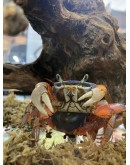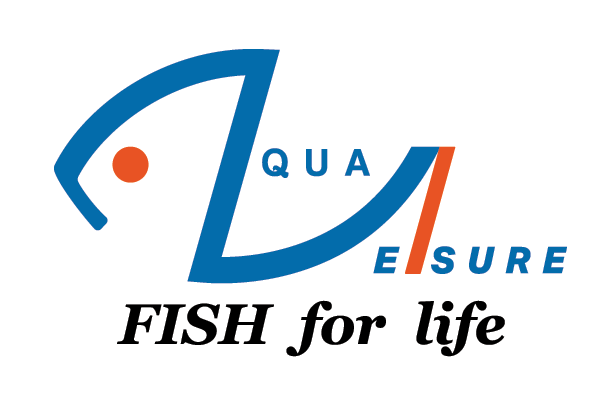RAINBOW CRAB
- RM45.00
Origin And Natural Habitat
Rainbow crabs, also known as African Rainbow Crab or Patriot Crab, are native to the coastal regions of West Africa. Showcasing stunning colors on their bodies with males featuring bright blue carapace and orange red legs along with white claws while females flaunt pale blue-grey hues combined with pale orange legs coupled by white pincers differentiates them from other animals in their natural habitat.
| Scientific Name | Cardisoma armatum |
| Common Names | Rainbow Crab, Patriot Crab, African Rainbow Crab, African Freshwater Crab, Nigerian Moon Crab, Tricolor Crab, Soapdish Crabs, Indigo Crab, Burrowing Land Crabs, Tricolour crabs |
| Family | Sesarmidae |
| Origin | Southeast Asia (specifically Indonesia), West Coast of Africa |
| Diet | Omnivore |
| Care Level | Intermediate |
| Activity | Mostly active during the night (nocturnal) |
| Life Span | 2-3 years |
| Temperament | Generally peaceful, but males can be territorial towards each other |
| Tank Level | Semi terrestrial, with access to both land and water areas in the tank |
| Minimum Tank Size | 5 gallons (18 liters) for a single crab, larger if keeping a group |
| Temperature Range | 75-82°F (24-28°C) |
| Water Hardness | 0-10 dKH |
| pH Range | 6.0-7.5 |
| Filtration/Water Flow | Slow to Moderate |
| Water Type | Freshwater Tanks |
| Breeding | Egg Carrier |
| Difficulty to Breed | Moderate |
| Compatibility | Compatible with like-minded and like-sized fish species and inverts |
| OK, for Planted Tanks? | With Caution |
Average Size
Rainbow crabs can reach up to 8 inches in size thought are usually purchased at a smaller size and seen in aquariums around 3-4 inches. To make sure they stay healthy, it is important for them to have sufficient space and hideouts when held together with other rainbow crabs, something we will be discussing more thoroughly later on in the section about housing conditions.
Lifespan
Rainbow crabs usually survive for around 8 years in their natural habitat, but when kept as pets they have an average life expectancy of 3-5 years. Maintaining the health of these vibrant crustaceans involves providing them with proper care to guarantee a suitable living environment – diet, stress levels, and surroundings all playing important roles. In order to successfully keep rainbow crabs captive it is necessary to create an optimal home setting and provide adequate support on a consistent basis.
Diet And Feeding
Rainbow crabs are omnivorous animals that need a well-balanced diet to stay healthy and content. To provide this, their meals should consist of fruits, vegetables, insects or other sources of protein. For optimal nutrition it is vital for the owners to manage leftover food accordingly in order to ensure these crustaceans get everything they require and that food doesn’t rot in the tank.
You should also watch for uneaten food reaching the water section of the tank. Make sure to clean out the water of the tank at least once a month and more often than that if you are dealing with ammonia or nitrite issues.
Behavior And Social Interaction
Rainbow crabs are a solitary species. If you are planning to keep one, plan on only keeping this species in the tank. While it is possible to keep another rainbow crab, they are aggressive with each other and require a larger tank.
There are no fish tank mates you can include in the water section of the tank. Your crab will eventually either eat or kill them over time. They are aggressive and territorial species once established.
Molting Process
Rainbow crabs require molting to not only grow their protective shells but for development as well. This process involves the crab taking in water until its carapace has reached a bursting point, at which time it will push out of its shell. It is critical that these creatures are left undisturbed during this delicate period so they can complete it properly. Do not attempt to handle or feed them while molting (they won’t eat anyway during this time), and let them eat up what was inside the old shell instead – making sure calcium levels remain balanced throughout this transition stage is paramount for rainbow crabs’ health. In order to breed these fascinating crustaceans successfully
Health And Potential Diseases
Maintaining a healthy environment and diet is essential for preserving the health of rainbow crabs, as shell rot, fungal infections, or parasitic infestations can easily take hold in poor conditions. Appropriate attention to their living arrangements should be taken to ensure they remain strong and lively.
Cleaning out the tank regularly helps battle these diseases. Keep a well balanced diet will also keep many diseases away. Don’t hesitate seeking professional help from a vet or experienced crab keeper if things do go south.
Reviews
There are no reviews for this product.





